The high street hangouts we loved – and lost
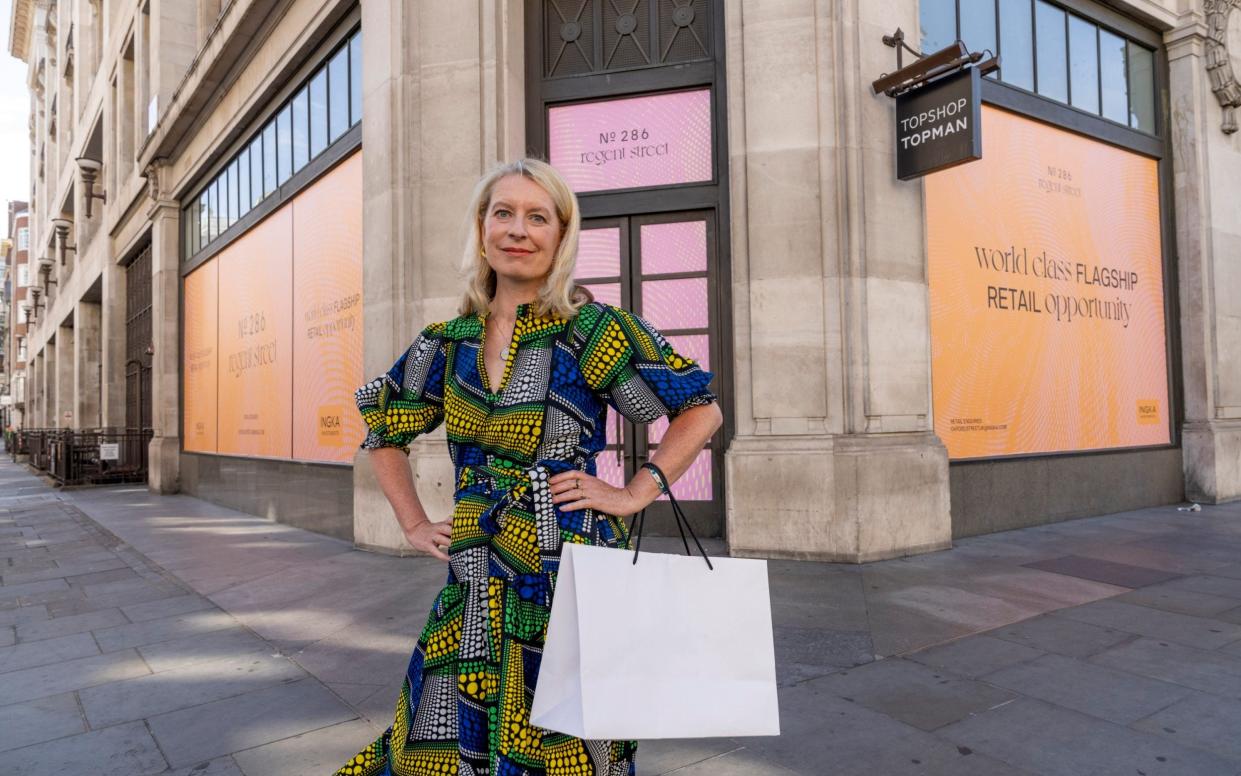
It may seem odd to be nostalgic about shops. But when I was rifling through my wardrobe in search of a scooped-neck Kelly green Kookai sweater I used to wear (Oh my, remember Kookai? Just like Miu Miu only cheaper!); I had a sudden flashback to how great going out shopping, specifically clothes shopping, used to be, in the years before the British high street began gradually dying a death.
I’m not talking about Hollywood-lensed Pretty Woman fantasy shopping. No, what I’m talking about are those halcyon days I spent mooching around on a Saturday afternoon with my mates, our after-school-job pay packets (later our actual grown-up wages) in our pockets, losing ourselves in stores like Chelsea Girl, Warehouse and Oasis, sadly all now gone from our high streets (The latter two were among the 1,100 fashion shops which closed in 2020 when the pandemic panic was biting hard).
I lived in a village south of Manchester back then, so a day of proper immersive shopping began with a majestic sweep from Piccadilly Station, down to the glories of King Street, always via a scoot round Lewis’s department store (which closed in 2001), specifically for the Miss Selfridge floor, where the mannequins looked like a young Grace Coddington and the in-store posters as though they’d been shot by Deborah Turbeville. And, that’s not forgetting the mighty branch of Next on Market Street (the Next sale was such a moment, I once skipped a day of sixth form in search of a black roll neck that in my head would make me look like Yasmin Le Bon).
It was a time when high street shopping and popular culture were deliciously intertwined. I had a particular fondness for a Manchester boutique called The Last Picture Show in St Anne’s Court (now an anaemic-looking office space), where my sister and I both bought a pair of peak 1980s canvas shorts, which we liked to roll up at the hems à la Andrew Ridgeley. And I can still vividly picture my mum’s tiered skirts and Victoriana blouses from Dorothy Perkins, which I commandeered when I was going through my Adam and the Ants phase. (All of Dotty P’s physical shops closed following the grim unravelling of the Arcadia Group, which went into administration in November 2020 in a messy web of pension deficits and thousands of jobs lost).
Ah yes, Philip Green’s once glittering Arcadia Group, whose erstwhile Topshop flagship store on Oxford Circus finally shut its doors in 2021. The iconic location was bought by the owners of furniture giant Ikea last year (for an estimated £378 million) and is due to reopen selling Billy bookcases and suchlike in autumn 2023; but for now, its blacked-out windows feel like an open wound spreading the contagion of the retail crisis to the capital’s most famous fashion high street, which seems to mushroom with more bizarre American candy stores, tourist merch and phone shops every time I visit.
It’s hard to believe that the Topshop flagship was British retail’s Xanadu, the in-the-know destination my fashion-savvy American editor friends insisted on shoehorning into their London Fashion Week itineraries. And who can forget the ultimate high-street showbiz spectacle in 2007, when Kate Moss promoted her much-vaunted Topshop collection by posing in the actual shop window to the screams of fans and the popping flash bulb of the assembled world press. I think of it now as the British high street’s pre-crash Icarus moment, the equivalent of the Sotheby’s auction of Damien Hirst’s diamond skull the night before Lehman Brothers collapsed.
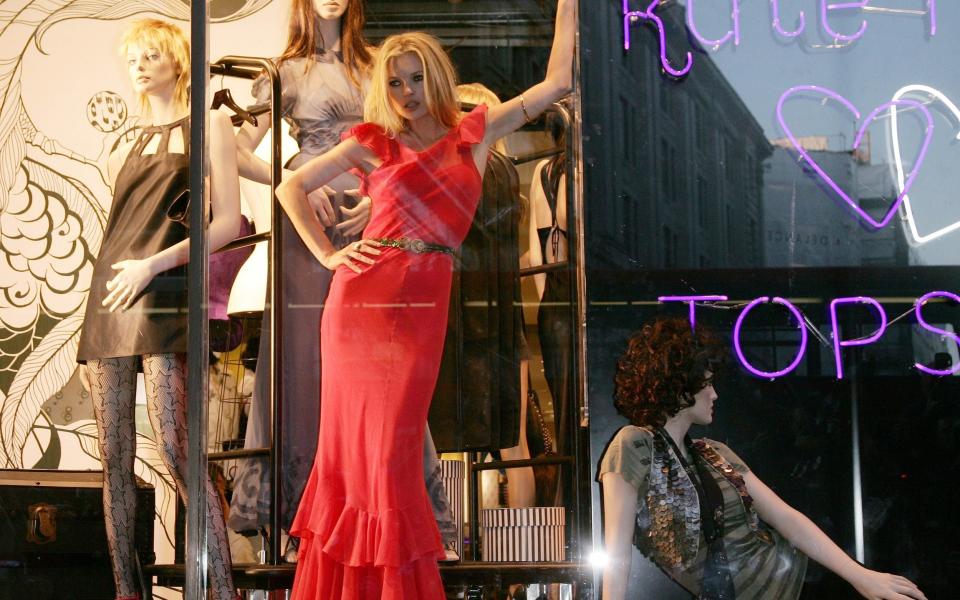
The shift to online shopping was well underway even back then, only to be hyper-accelerated by changing shopping habits during the pandemic. Add to that fast fashion’s grimly determined race to the bottom squeezing the global supply chain to produce cheaper and cheaper products, and the demise of once great British fashion chains is not so surprising. It does concern us though; a survey by Statista in 2020 showed the vast majority of UK consumers did care if the high street disappeared (only two per cent did not).
Because the high street has always been about more than just shopping. “The high-street has always been a vibrant community hot spot,” says Savannah Scott, senior creative researcher at strategic foresight consultancy, The Future Laboratory, the leading “futurologist” firm, which recently laid out a vision for stores of the future “Hyperphysical Stores”. “With the pandemic, we saw mass closures of retailers, many moving out of deserted city centres into local neighbourhoods or strategically located pop-up spaces. As we start to collectively recover and re-engage with urban areas, the retail sector has an opportunity to redefine the role that stores play in building a new era of community spaces and high street.”
I speak to Kris Hamer, director of insights at the British Retail Consortium, who assures me that all is not lost. In fact, high street footfall is inching up, with July figures higher than June (though still around 10 per cent down on pre-pandemic figures); retail parks have been hit harder with footfall around 25 per cent down in the same period. The businesses that will survive and thrive, he predicts, are those with e-commerce and bricks-and-mortar strategies which work in harmony with each other. The key is in understanding their customers through data. “The one thing that online has done is create an awful lot more data,” he says. “Getting on top of that is going to be key for retailers.”

I’m still contemplating our conversation when I make a nostalgic pilgrimage to Manchester to get a view from the street. The atmosphere on King Street is thrumming with midday diners in full flow in tapas bars, which take up swathes of the pavement. I join some tech bro types checking out some stylish e-bikes at MATE.Bikes. There’s nothing I want to buy on the fashion front, the stores just don’t seduce me.
“The next generation of stores; whether that be luxury or middle market, will need to think beyond purely transactional spaces and standard product offerings. Consumers are looking for brands and store spaces that champion culture, locality and community,” observes The Future Laboratory’s Scott. “It’s about re-engaging with shoppers on a sensorial, emotional, and tangible level”.
Back in London, I speak to Marielle Wyse, the entrepreneur behind one of the glittering gems of online fashion retail that emerged during the pandemic gloom. A former documentary maker, her lockdown project was selling joyful rainbow cashmere sweaters under the label Wyse. The startup has grown with such alacrity that it now encompasses a full Wyse woman line and a cool, yet cosy store on Marylebone High Street. “My son says it looks just like our living room,” says Wyse, who admits that bricks and mortar was not initially part of the plan: “But when Marylebone High Street came up and was two doors from Waitrose, I felt I’d found my spiritual home.”
Old school retail – all about heart, community and communicating with your customer – is in Wyse’s blood. Her father ran a record store on Chelsea’s King’s Road (“cups of tea everywhere as he’d just chat with his customers”). That intimacy is very much the vibe chez Wyse. “Our customers really like that holistic experience,” she says, adding that embracing her destiny as a shopkeeper has taught her a lot. “I’m definitely on the shop floor listening.” And business is booming – so much so that another London store is planned and there’s talk of branching out of the capital with a third store in Bath. “The bestsellers in the shop are not the same as online. In the shop it’s about fabric, fluidity and real representation of colour, which you can try your best to do online, but it doesn't necessarily translate.”
The Wyse story is very telling. Its IRL store may be petite, but business is brisk and it just goes to show that a savvy brand really can reinvent the joy of high-street shopping, one midlife woman at a time. Is this “phygital” model something our moribund but missed high street brands can recreate? Let’s see. In the meantime I’m available for a high street nostalgia chat anytime you want to DM me.
13 shops we’ve loved and lost
1. Biba
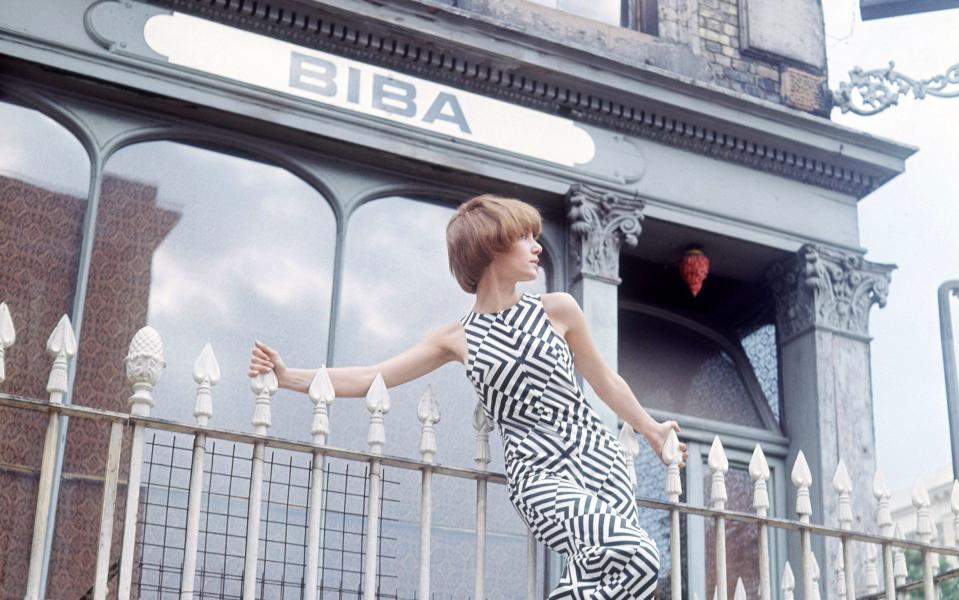
Synonymous with ’60s and ’70s fashion, Biba was one of the first brands to bring affordable fashion to the high street. The “Big Biba” in Kensington was the 1970s’ answer to the Oxford Circus Topshop, but it proved too costly to run and closed in 1975.
2. Snob
If you were a stylish young woman in the ’70s and ’80s, you probably owned something from Snob. The chain was acquired by Etam in 1987, and all stores were eventually rebranded.
3. Chelsea Girl
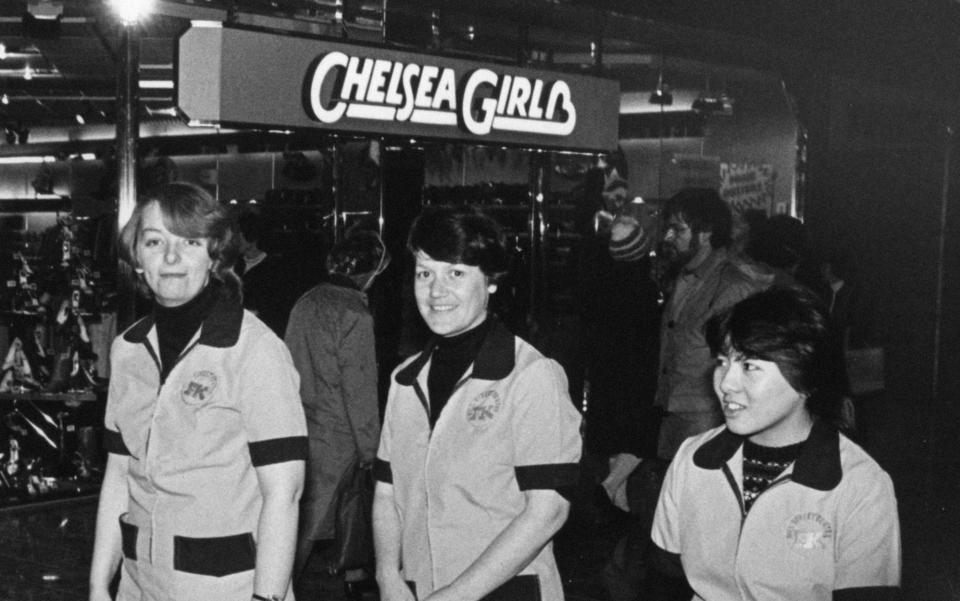
Who didn’t want to be a Chelsea Girl in the ’60s, ’70s and ’80s? The chain was rebranded as River Island in 1991 and remains a high street stalwart today.
4. C&A
Offering affordable clothing for the whole family, C&A once accounted for 4.4 per cent of the British clothing market. After a slow decline, it closed all 109 UK stores by 2000, although it continues to thrive in mainland Europe.
5. Tammy Girl
For those born in the ’70s and ’80s, Tammy Girl was the entry-level high street store – it was tween fashion before tweens were even a thing. Tammy Girl and sister brand Etam closed in 2005 after it was sold by Arcadia to BHS.
6. Kookai
Nineties teens wanting to add a little je ne sais quoi to their wardrobes made a beeline for French chain Kookai (closed in 2006). A fraction more upscale but with similar Gallic appeal was Morgan, which shut its doors in 2008.
7. Dolcis
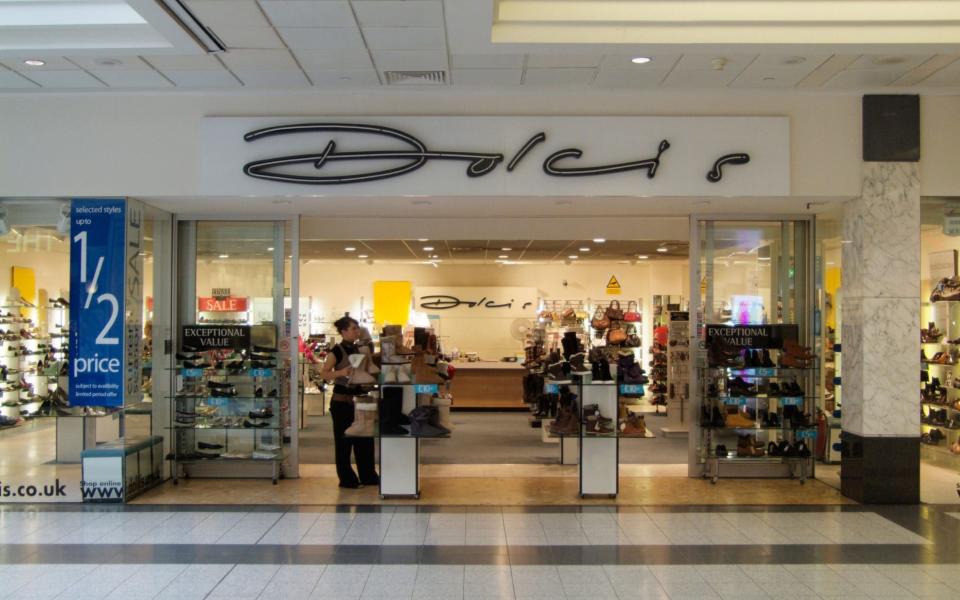
Dolcis once had 65 stores and 150 concessions across the UK. After falling into administration in 2008, it was acquired by the owner of Barratts, and all its stores were renamed. All Barratts stores were closed in 2013.
8. Jane Norman
Fashion’s current obsession with all things Y2K has sparked fresh interest in Jane Norman, a chain which defined late ’90s style but fell out of favour after the Millennium and closed in 2011.
9. Tie Rack

The 1980s was the era of the specialist microshop; every station mall seemed to have a Tie Rack, a Sock Shop or a Knickerbox. Ultimately, the likes of John Lewis and M&S were able to offer better products at a better price and Tie Rack closed in 2013, although Knickerbox and Sock Shop continue to live online.
10. Laura Ashley
In the ’70s and ’80s, you couldn’t move for Laura Ashley’s chintzy, wholesome aesthetic and, thanks to the Cottagecore trend, its vintage dresses still sell well on eBay. Modern polyester iterations failed to resonate with shoppers and its stores quickly fell victim to the pandemic in 2020.
11. Topshop (plus Topman, Miss Selfridge, Dorothy Perkins and Burton)
For almost three decades, no London shopping trip was complete without a visit to the 90,000 sq ft Topshop flagship at Oxford Circus. When the Arcadia Group went into administration, the brands were sold off to Boohoo and Asos. All stores were closed in 2021 but the brands continue to trade online.
12. Gap
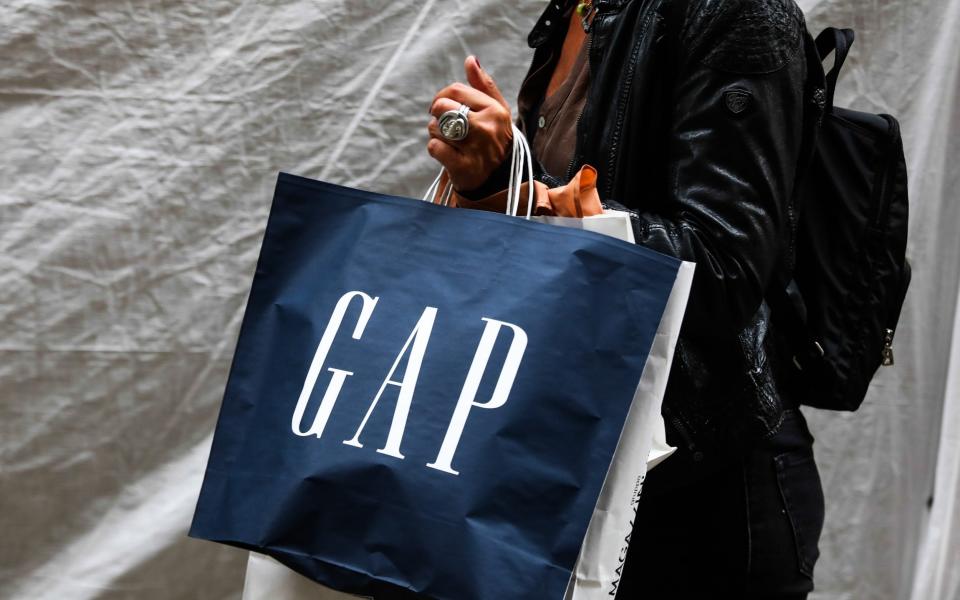
Purveyor of unfussy wardrobe basics, Gap once had such a dominant presence on the British high street, its TV ads were a headline event. A failure to evolve and an overreliance on discounting resulted in the closure of all 81 UK stores in 2021.
13. Debenhams
The “Designers at Debenhams” offering was the original high-end-high street collaboration, and with names including Julien Macdonald, Jasper Conran and Matthew Williamson, it proved a hit with ’90s shoppers. After years of financial difficulties the stores closed for good in 2021.

 Yahoo News
Yahoo News 
